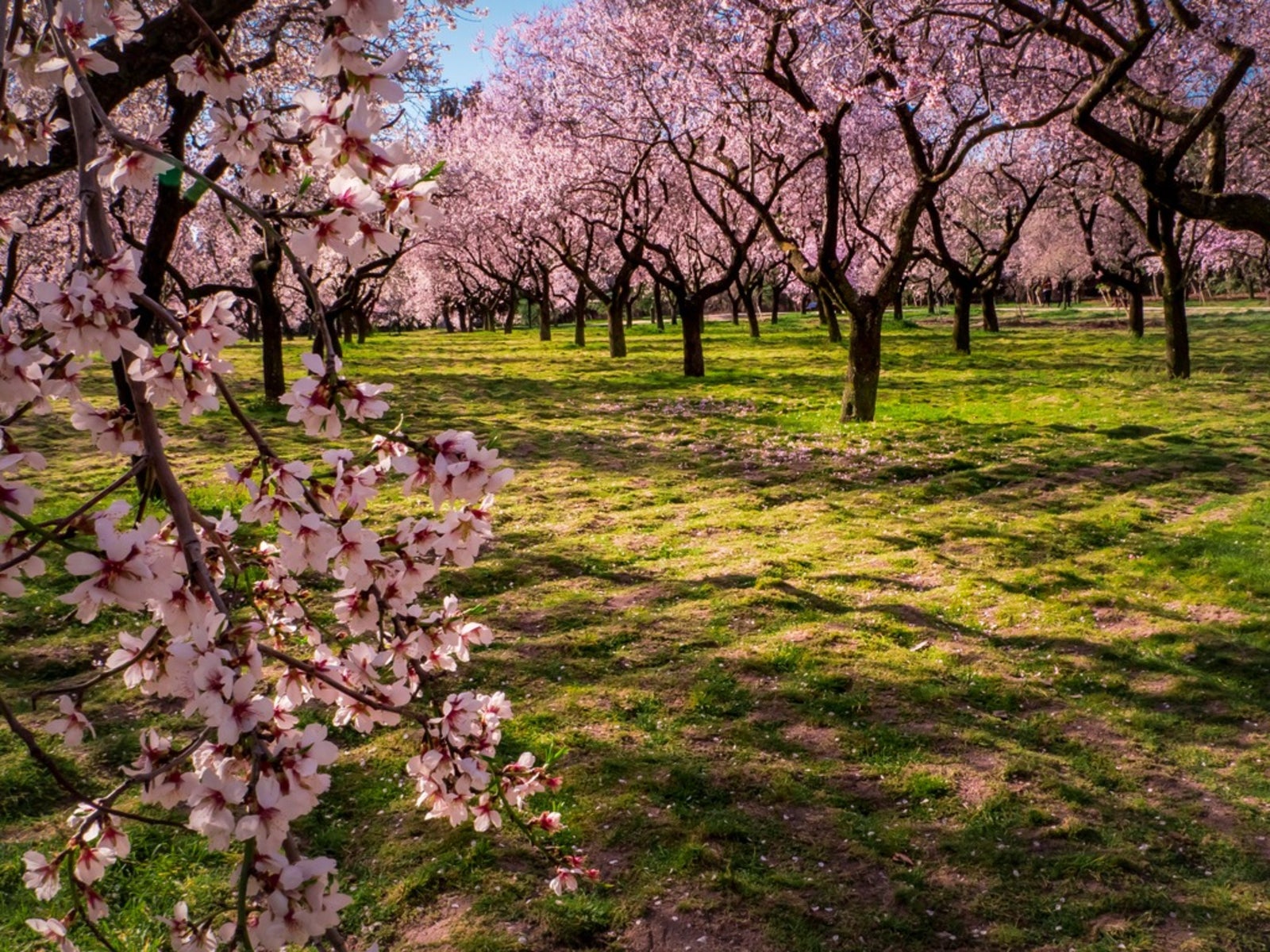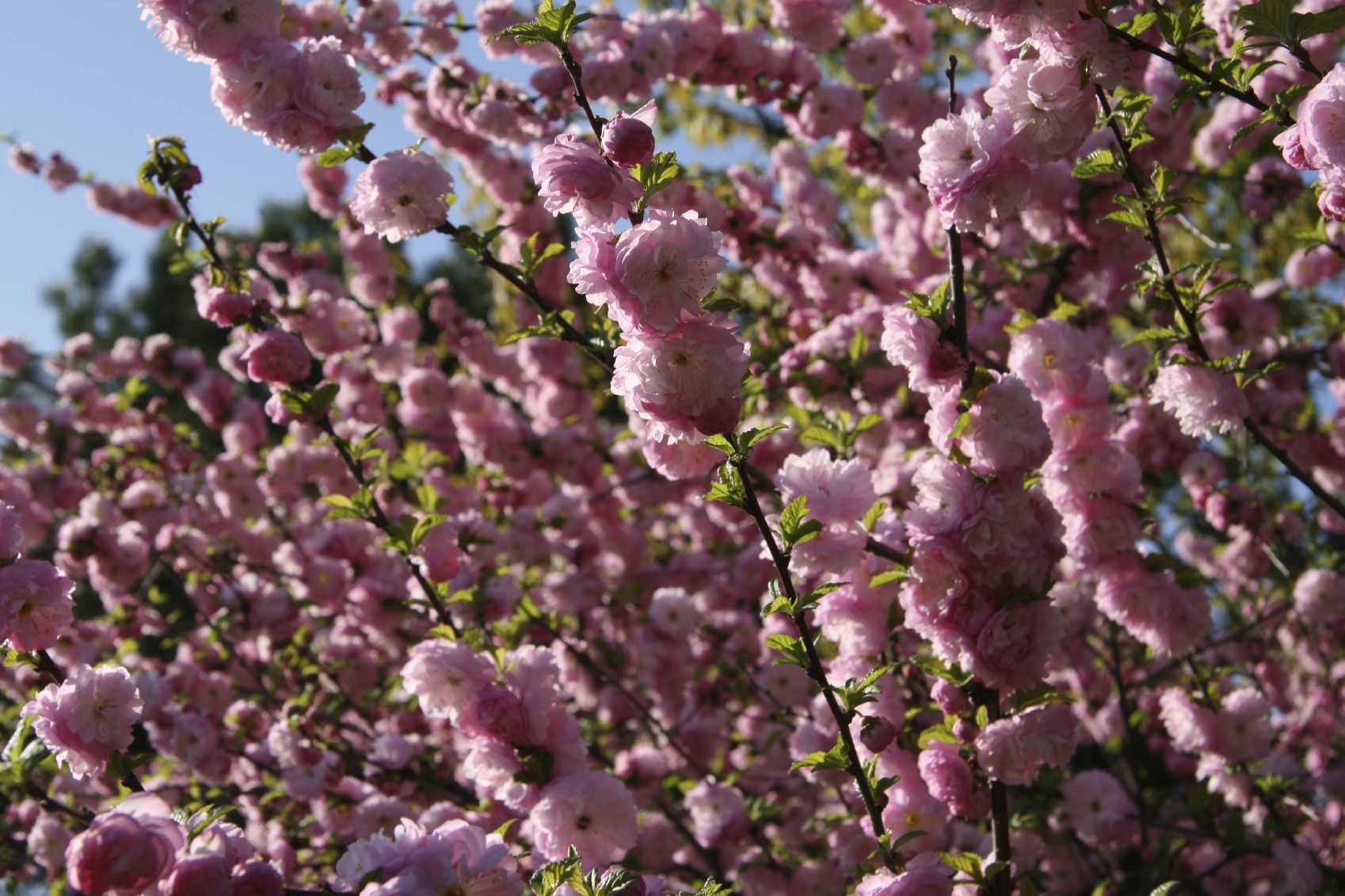Flowering Almond Care: How To Grow Flowering Almond Trees

Nothing is quite as pretty in the spring as the flowering pink almond tree. Growing flowering almonds is a great way to add color to the landscape. Let's learn how to grow flowering almond trees.
Flowering Pink Almond
Flowering almond, or double flowering plum (Prunus triloba), is a deciduous tree with gorgeous spring flowers blooming pink with double petals. This medium growing Rosaceae family member is a lovely addition to accent shrub borders around parking lots, strip plantings, or around a deck or patio. The flowering almond makes a striking specimen plant. The shape of the flowering pink almond is a symmetrical, vase-shaped canopy with a smooth outline and a profusion of light green leaves. Growing flowering almonds reach around 12 feet (3.5 m.) with an equal spread. This non-native can be grown through USDA zones 4-8. The flowering almond is drought tolerant with a moderate growth rate.
Flowering Almond Care
The flowering almond tree is a fairly resilient cultivar. This Prunus may be planted in sun, partial sun, or shade in a variety of soils, with the exception of overly saturated conditions. Location in a ground cover or mulched bed is advisable as the tree does not tolerate damage caused by mechanical injury or other stress. The flowering almond tree is partial to pruning either for training purposes or to facilitate more prolific blooms. It is even tolerant of heavy pruning, so it makes for a terrific container plant that can be molded into a bonsai. Pruning flowering almond, however, is not necessary to maintain the structure of the tree but may be used to restrain wayward branches or maintain pedestrian access. Branches can be cut in early spring and then forced to bloom by being placed indoors for stunning floral arrangements.
Flowering Almond Tree Problems
Flowering almond trees are susceptible to a number of insect marauders. Aphids can cause leaf distortion. Borers attack trees already in stress, so be sure to maintain a regular irrigation application and fertilizing schedule. Several types of scale are known to infest the flowering almond and can be treated with horticultural oil during its dormant phase. Tent caterpillars make large nests and can seriously damage foliage. Prune out any small infestations immediately and use Bacillus thuringiensis as soon as the insects are spotted. Severe wet weather lends itself to a fungus which creates holes in the foliage and causes the leaves to drop. Black knot causes black swelling of the branches, which can be pruned out and powdery mildew may coat the foliage.
Gardening tips, videos, info and more delivered right to your inbox!
Sign up for the Gardening Know How newsletter today and receive a free copy of our e-book "How to Grow Delicious Tomatoes".

Amy Grant has been gardening for 30 years and writing for 15. A professional chef and caterer, Amy's area of expertise is culinary gardening.
-
 Moody Blooms For Spring: 8 Types Of Black Flowers To Add Drama To Spring Displays
Moody Blooms For Spring: 8 Types Of Black Flowers To Add Drama To Spring DisplaysFrom midnight burgundies to inky violets, several types of black flowers can enrich and embolden a spring display. Try these brooding bloomers for a moody garden
By Tonya Barnett
-
 Can Snake Plants Live Outside? Everything You Need To Know For Snake Plants Al Fresco
Can Snake Plants Live Outside? Everything You Need To Know For Snake Plants Al FrescoSnake plants can live outside given the right conditions, but be careful that they don't take over! Learn the best way to use snake plants in your landscape.
By Mary Ellen Ellis
